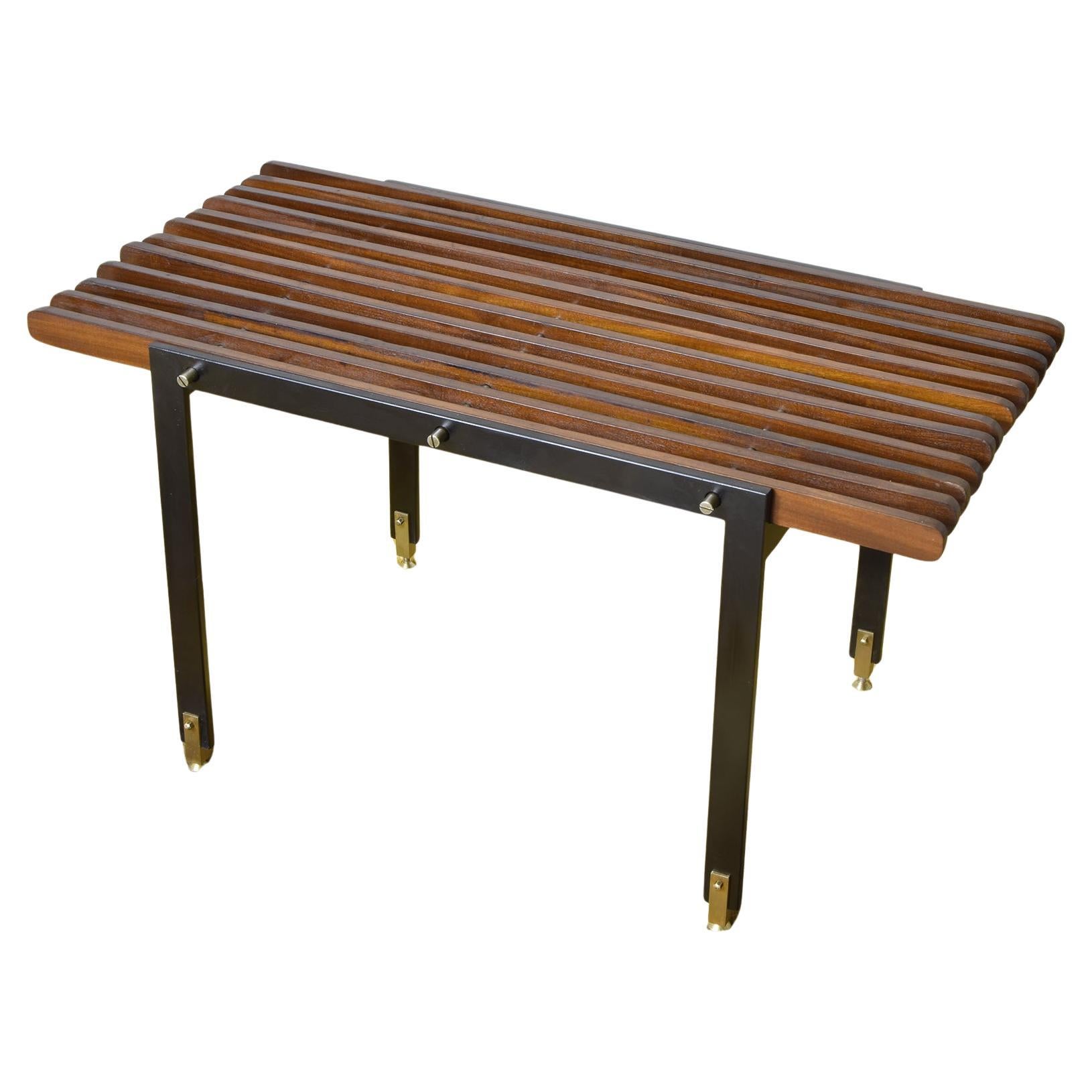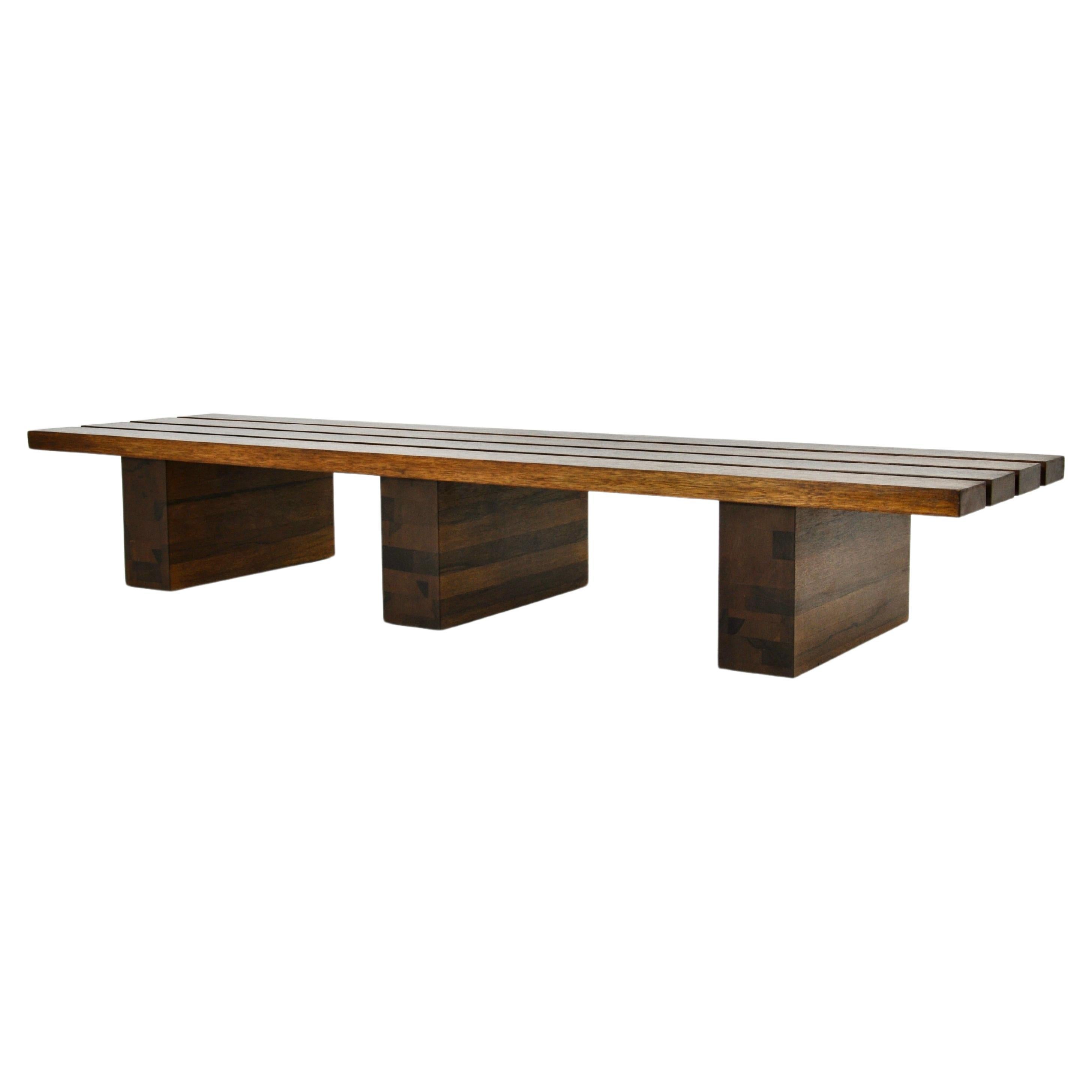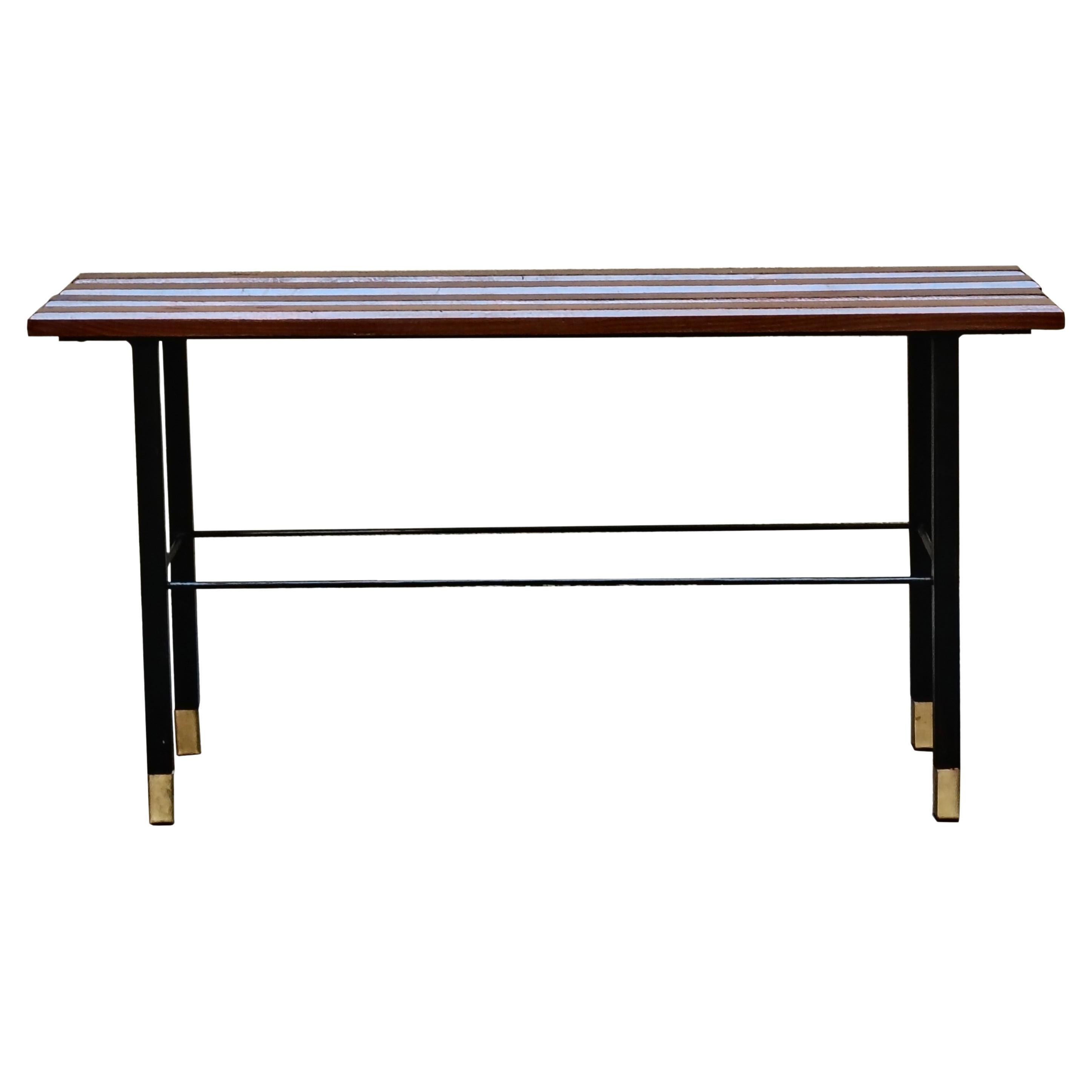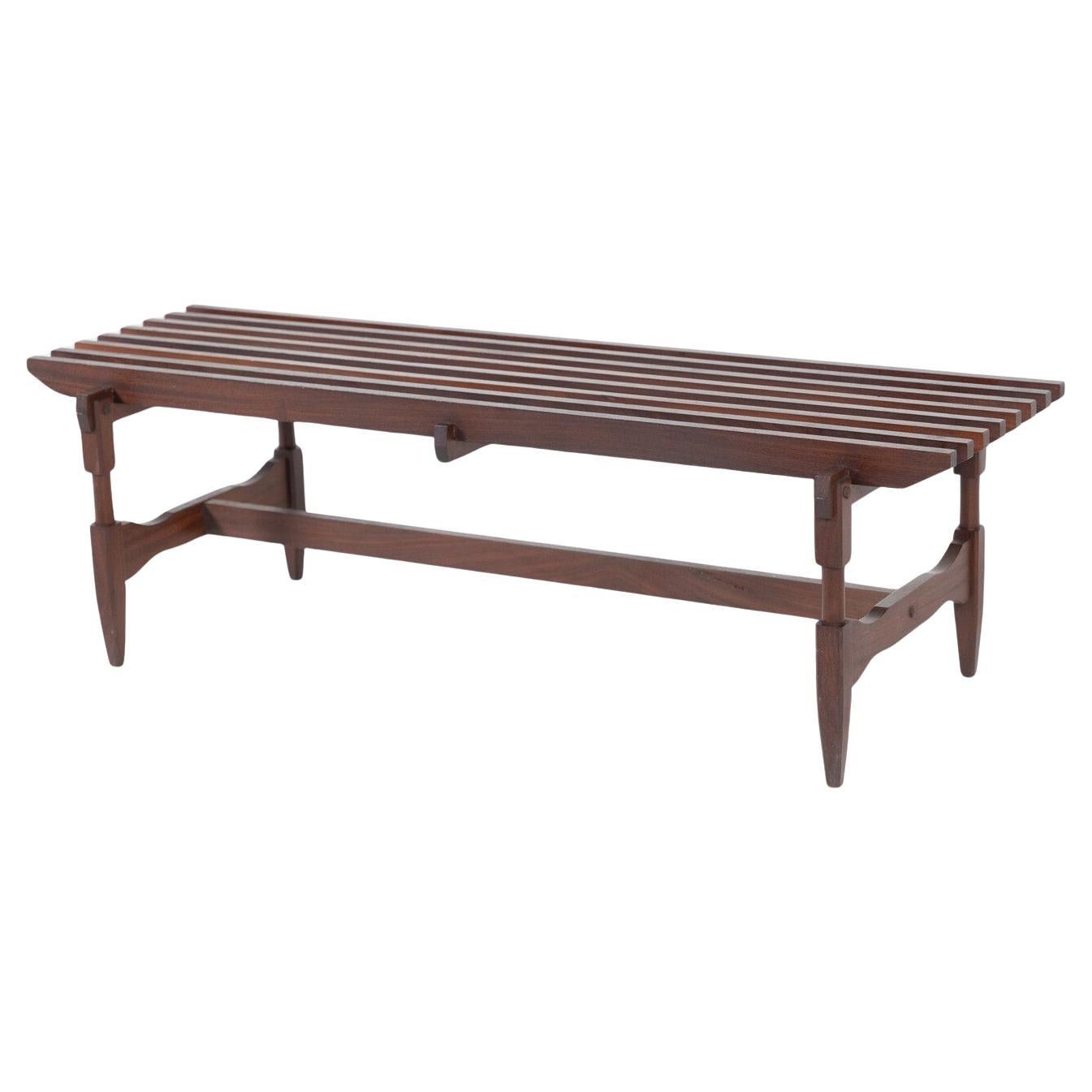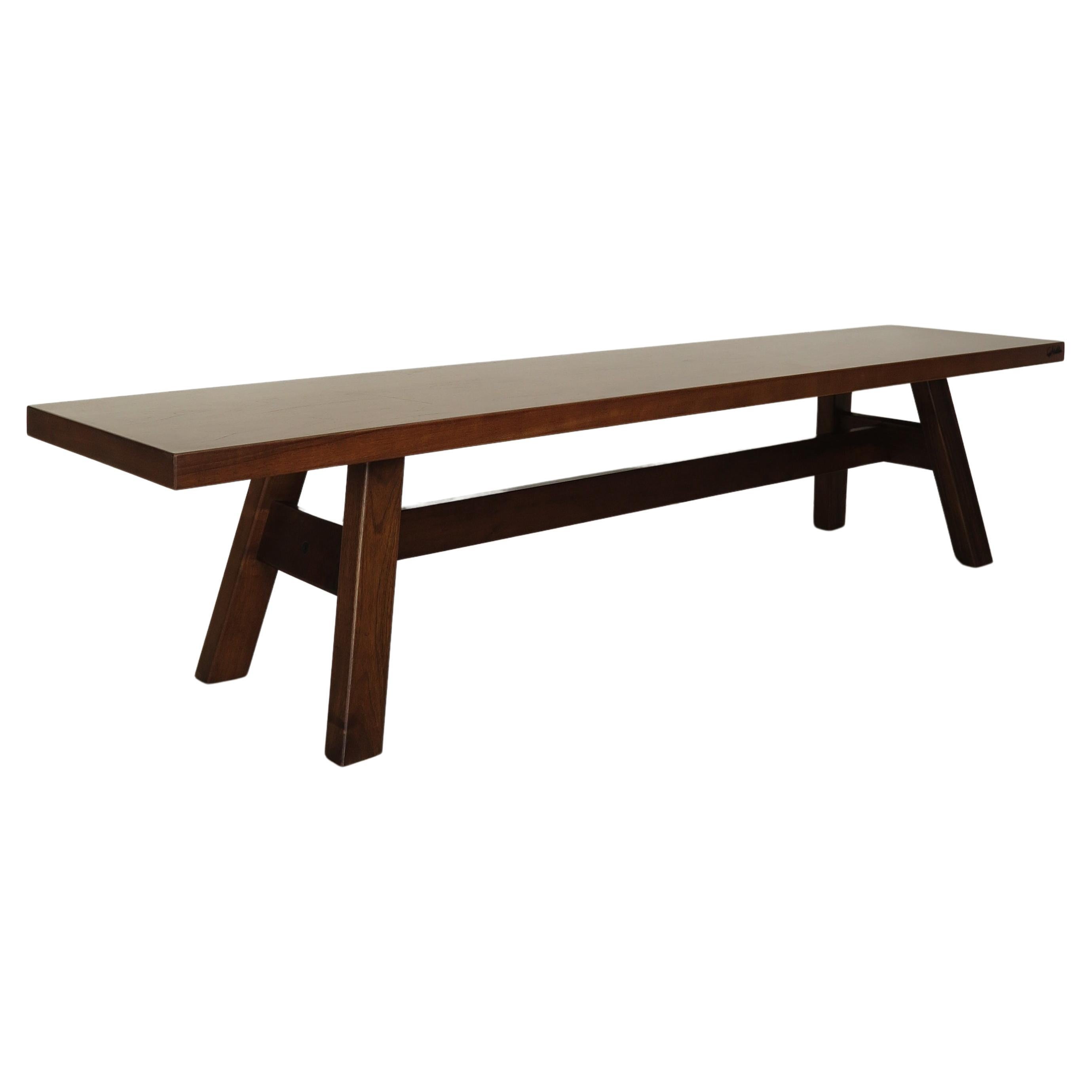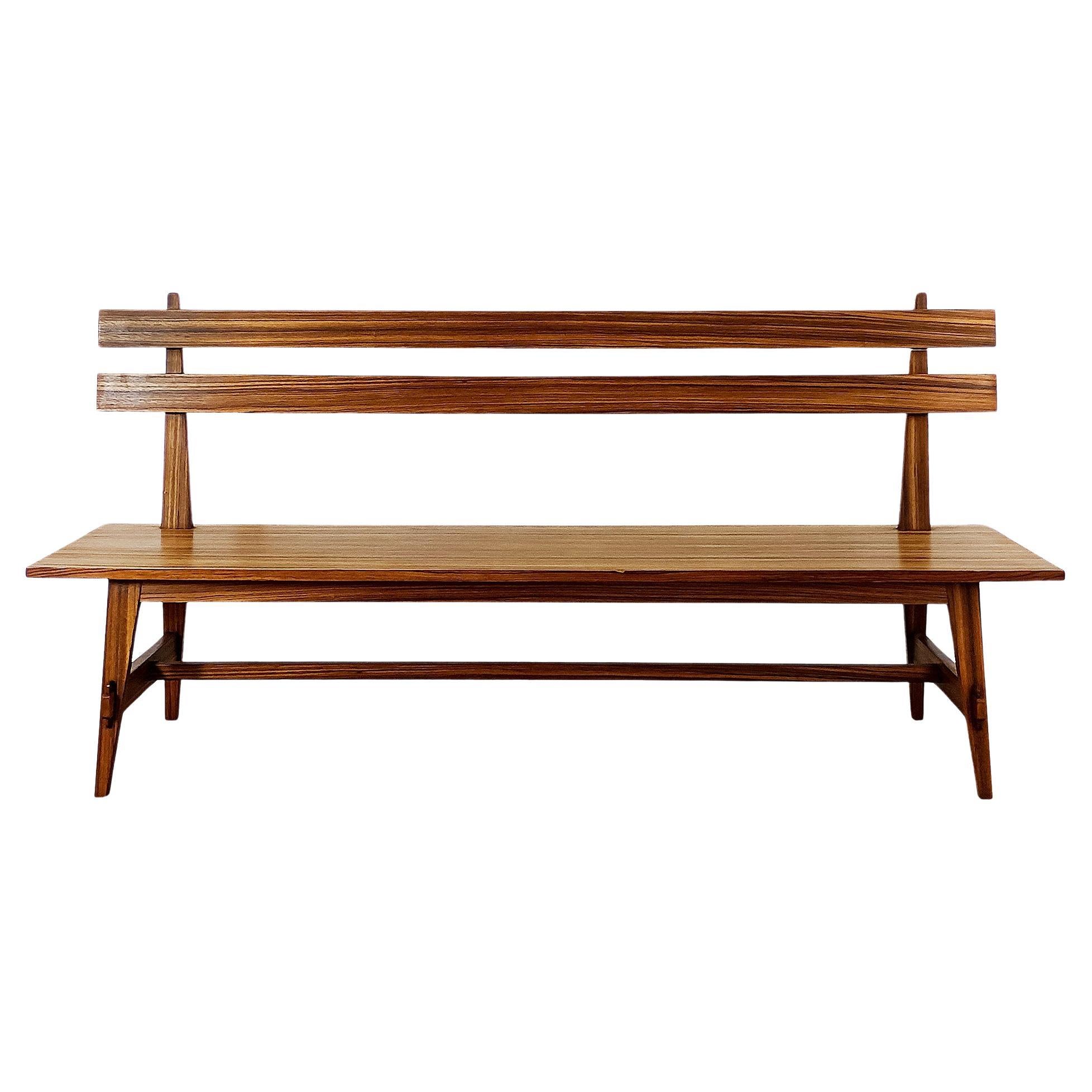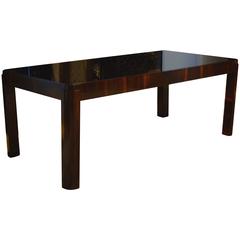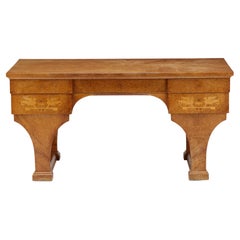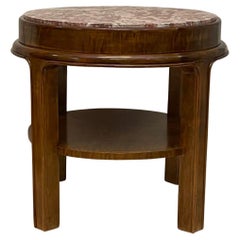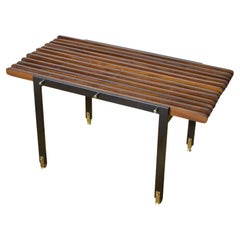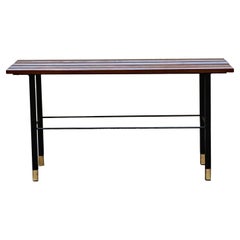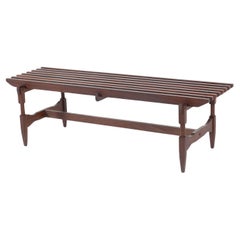Want more images or videos?
Request additional images or videos from the seller
1 of 6
1930s Italian Bench
$9,000
£6,792.05
€7,775.87
CA$12,692.98
A$13,935.31
CHF 7,270.08
MX$168,636.69
NOK 91,119.20
SEK 85,858.25
DKK 58,044.82
About the Item
This 1930s Italian bench is so over-scaled, and monumental in appearance, that it seems to have been made for the large room it was destined, rather than the comfort of a typical sitter. As such, it would function equally well as a low side table or a high cocktail table. We’ll allow the buyer to determine its use.
The designer was Pierluigi Colli, and the fabricator Martinotti, the Turin furniture and interior decorating firm that was established in 1831, and exhibited at the 1876 Philadelphia Centennial Exhibition and the 1904 St Louis World’s Fair. Colli’s family owned a textile company that supplied Martinotti with upholstery fabrics, suggesting nepotism had something to do with his being hired as the firm's director in 1926. Nevertheless, he proved himself worthy as a designer and a businessman. Having studied in Paris at the Ecole des Arts Decoratifs, he befriended leading French designers, and arranged for Martinotti to retail Lalique glass and Jean Perzel lighting. In addition, the quality of their work, and Colli’s dedication to the modern design movement, prompted Carlo Mollino, Gio Ponti, and Gino Levi-Montalcini, among others, to have Martinotti fabricate some of their furniture. Colli’s claim to fame, however, is his own work as a designer, and his ability to master the vocabularies of every trend from Art Deco to midcentury modern.
During the Great Depression, when nearly every nation floundered economically, fascist Italy prospered under the dictatorship of Benito Mussolini. Unlike his fellow dictators Hitler and Stalin, who considered neo-classicism the only suitable style, Mussolini also accommodated modernism, known in Italy as rationalism, the local iteration of the so-called International Style. And this being Italy, both camps acquitted themselves with panache. A proponent of modernism, Colli mastered the monumental sensibility of fascism, and the forms of rationalism, while maintaining the superb craftsmanship he demanded, and employing the luxurious materials he favored. This is seen in our bench, consisting of eight barely intersecting walnut slabs that are veneered with amboyna, and scored on the edges of the top and bottom slabs.
- Creator:Pier Luigi Colli (Designer)
- Dimensions:Height: 17.5 in (44.45 cm)Width: 47 in (119.38 cm)Depth: 22.75 in (57.79 cm)
- Style:Modern (Of the Period)
- Materials and Techniques:
- Place of Origin:
- Period:
- Date of Manufacture:circa 1935
- Condition:Wear consistent with age and use. It was touched up and polished.
- Seller Location:New York, NY
- Reference Number:1stDibs: LU1061426154312
About the Seller
5.0
Recognized Seller
These prestigious sellers are industry leaders and represent the highest echelon for item quality and design.
Established in 1994
1stDibs seller since 2014
20 sales on 1stDibs
Typical response time: 12 hours
- ShippingRetrieving quote...Shipping from: New York, NY
- Return Policy
Authenticity Guarantee
In the unlikely event there’s an issue with an item’s authenticity, contact us within 1 year for a full refund. DetailsMoney-Back Guarantee
If your item is not as described, is damaged in transit, or does not arrive, contact us within 7 days for a full refund. Details24-Hour Cancellation
You have a 24-hour grace period in which to reconsider your purchase, with no questions asked.Vetted Professional Sellers
Our world-class sellers must adhere to strict standards for service and quality, maintaining the integrity of our listings.Price-Match Guarantee
If you find that a seller listed the same item for a lower price elsewhere, we’ll match it.Trusted Global Delivery
Our best-in-class carrier network provides specialized shipping options worldwide, including custom delivery.More From This Seller
View AllAmerican Art Deco Table Attributed to Eugene Schoen
By Eugene Schoen
Located in New York, NY
This large Art Deco table is attributed to the Austrian born New York designer Eugene Schoen. The mahogany carcass is veneered in Macassar, and surfaced with a sheet of black opaline...
Category
Vintage 1930s American Art Deco Dining Room Tables
Materials
Opaline Glass, Macassar, Mahogany
1935 Jansen Dining Table
By Maison Jansen
Located in New York, NY
The January 1935 issue of Plaisir de France featured two dining tables by Jansen. The editors saw fit to present the same photograph of one of the two once again in the book Decoration de France, a 1949 compilation of articles and images previously published in the magazine. This photograph shows the table before an antique Chinese screen, extravagantly set with Lalique glass, and a fantastical Misia...
Category
Vintage 1930s French Art Deco Dining Room Tables
Materials
Bronze, Other
$70,000
Art Deco Desk by Ernest Boiceau
By Ernest Boiceau
Located in New York, NY
This Boiceau desk bears his stamp, and was entirely veneered in amboyna, an exotic burlwood named for Ambon, the Indonesian island where it was harvested. The naturally squiggling patterning of the veneer provides an overall surface decoration. The top alone has no fewer than 60 small book-matched squares of it – ten across and six deep – creating a kaleidoscopic effect in subtle monochrome. Applied decoration is minimal. It consists of two inlaid pairs of griffins in boxwood and purplewood facing off across braziers on both the front and the back of the desk, and blind-tooled Greek keys trimming white-leather-topped shelves that slide out to either side. These decorations introduce no color, and, in lying flush with the surface, leave the sleek form undisturbed. Boiceau even eliminated drawer pulls, necessitating a lock and key for each drawer.
Born in Lausanne in 1881, Boiceau descended from French Huguenots who had settled in Switzerland. Prominent as bankers, lawyers, businessmen, and diplomats, the Boiceaus were a cosmopolitan family. Ernest studied painting in Munich, and then painting and architecture in Paris at the École des Beaux-Arts. In 1900 he embarked on a ten-year European sojourn, painting landscapes and portraits along the way. In 1910 he resettled in Paris, became interested in textiles, and established an embroidery workshop that catered to the stage and haute couture. Among his clients were the Folies Bergères, the Comédie-Française, and the Paris Opéra, and the fashion houses of Worth and Molyneux. He also made embroidered table linens, wall hangings, and upholstery fabrics. In a 1913, at an embroidery exhibition in Paris at the Musée Galliera, he presented a boudoir in collaboration with curtains, upholstery fabrics, and a tapestry, embroidered in modern abstract designs. In 1925 he launched a couture line, and branched out to design finely crafted objects and furniture made in rare woods, like ebony and Tasmanian oak...
Category
Vintage 1920s French Art Deco Desks
Materials
Bronze, Other
Circa 1930 German Side Table
By Fritz August Breuhaus de Groot 1
Located in New York, NY
Our table was made of birch, solid and veneered, stained a rich brown, and topped off with a slab of Bohemian breccia marble. We date it to around 1928, and attribute the design to Fritz August Breuhaus de Groot, who coined the term Kultivierte Sachlichkeit (Cultured Objectivity) to describe his work, and distinguish it from the Neue Sachlichkeit (New Objectivity) practiced by his contemporaries Walter Gropius, Mies van der Rohe, and Lily Reich. The table bears a passing resemblance to a considerably simplified, marble-topped ovoid one that he designed for his 1934 Berlin living room.
Breuhaus was a man on the make. The first of his three marriages was to the daughter of an industrialist, who financed the building of luxury villas and workers’ housing designed by his son-in-law. In 1929, Breuhaus, the son of a dentist, added “de Groot” to his name, falsely linking himself to a distinguished family of painters. By then, he’d been fudging his academic record for years. That didn’t prevent a teaching appointment at the State University of Bavaria, which allowed him to add the prestigious “Herr Professor” prefix to his name. Yet he never followed through on the teaching — he was far too busy designing more luxury villas (commissions he accepted only if he could furnish them as well), and products for his own company, which included furniture, textiles, wallpapers, lighting, and fine silver. In addition to designing aircraft interiors for Lufthansa, and pullman railroad...
Category
Vintage 1920s German Modern Side Tables
Materials
Marble
19th-Century Neo-Classical Table
Located in New York, NY
This table’s bold, graphic, and geometrical marquetry in satinwood and rosewood recalls the paintings of Bridget Riley and other 1960s Op Art artists. The patterning even extends to...
Category
Antique 1840s Czech Neoclassical Tables
Materials
Brass
Russian 19th Century Mahogany Table
Located in New York, NY
Every contour and plane of this exquisite tray-top, mahogany table on wheels is outlined with glinting brass stringing — a hallmark of Russian cabinetry in the late 18th and early 19...
Category
Antique 1840s Russian Louis Philippe End Tables
Materials
Brass
You May Also Like
Italian wood bench 60s
Located in bari, IT
Teak wood bench on lacquered iron frame and brass feet, 1960s Italian production
Category
Vintage 1960s Italian Mid-Century Modern Benches
Materials
Metal, Brass
$1,059 Sale Price
20% Off
Italian Bench, 1950s
Located in bruxelles, BE
Wooden bench made by an Italian craftsman in the 1950s. Wear due to time and age of the bench.
For shipping, request us for receive the best price.
Category
Vintage 1950s Italian Mid-Century Modern Benches
Materials
Wood
$6,020
Wood and Metal Bench, Italy 1960s
Located in Naples, IT
Teak wood bench, Italian production 1960s. The bench is made of 4 teak strips, black metal frame with brass feet.
In the mood of Mid-Century Modern like Gio Ponti, Gianfranco Fratti...
Category
Vintage 1960s Italian Mid-Century Modern Benches
Materials
Metal, Brass
Mid-Century Modern Wooden Bench by Ico and Luisa Parisi, Italy, 1950s
By Ico & Luisa Parisi
Located in Brussels, BE
Mid-Century Modern Wooden Bench by Ico and Luisa Parisi, Italy, 1950s
Category
Mid-20th Century Italian Mid-Century Modern Benches
Materials
Wood
Giovanni Michelucci for Poltronova Italian Wood Midcentury Bench Consolle 1960s
By Poltronova, Giovanni Michelucci
Located in Reggio Emilia, IT
Italian midcentury modern design walnut bench or console table serie Torbecchia designed by Giovanni Michelucci and produced by Poltronova, Italy 1964.
Fire-branded G. Michelucci tra...
Category
Vintage 1960s Italian Mid-Century Modern Benches
Materials
Walnut
Large bench - Italy 1950
Located in Girona, Girona
Large bench in solid Zebrano and Zebrano veneer. Very nice cabinet work.
Italy around 1950.
Category
Vintage 1950s Italian Mid-Century Modern Benches
Materials
Zebra Wood
$4,455
More Ways To Browse
Gino Levi Montalcini
Neo Classicism Style
Contemporary Plaster Benches
End Of Bed Bench
Entryway Seat
Gothic Oak Benches
Perriand Cansado
Plank Bench
Upholstered Bench Mahogany
1970s Plastic Benches
Brass Swan Head
Chesterfield Bench
Chinese Elm Bench
European Resin Benches
French Caned Bench
Knoll Florence Bench
Oak Hall Seats
Paul Mccobb Bench
